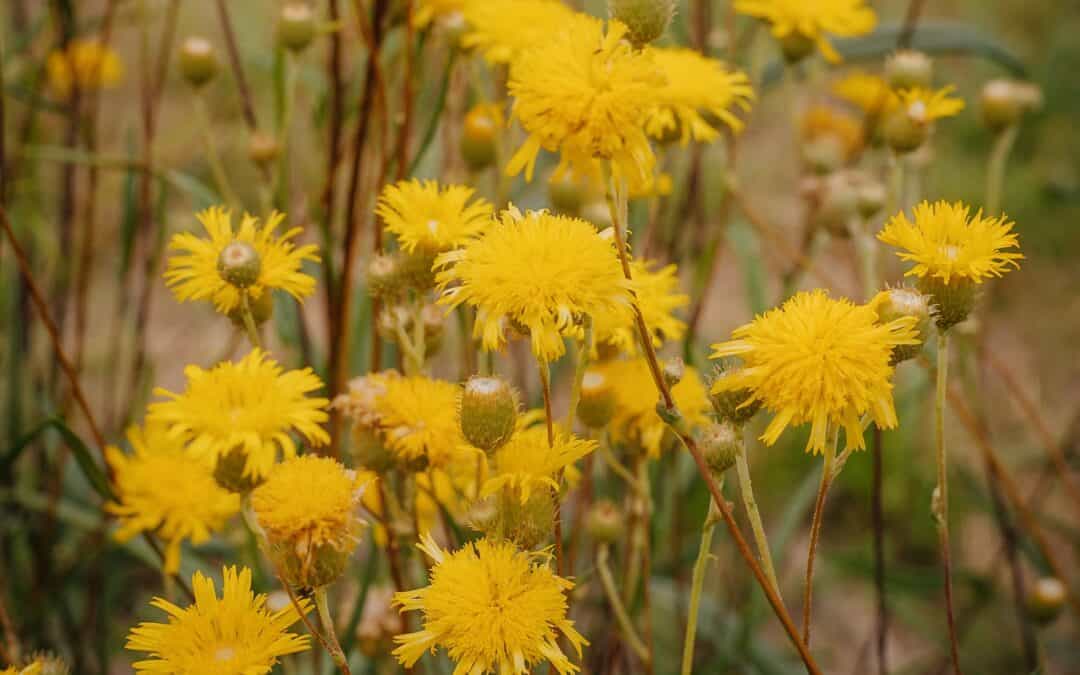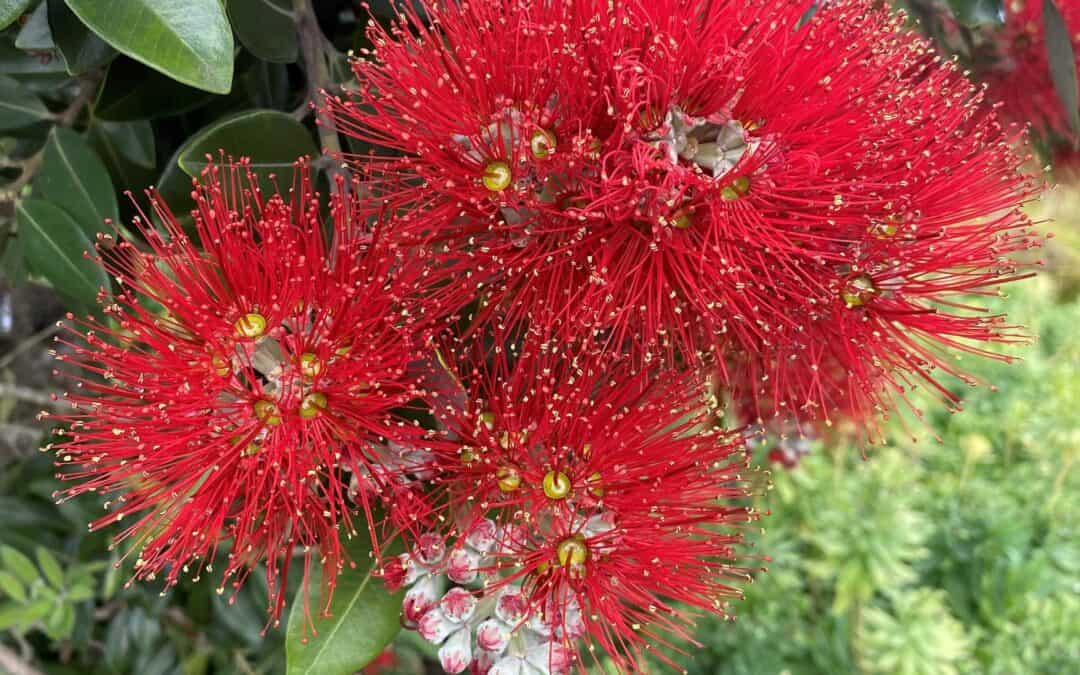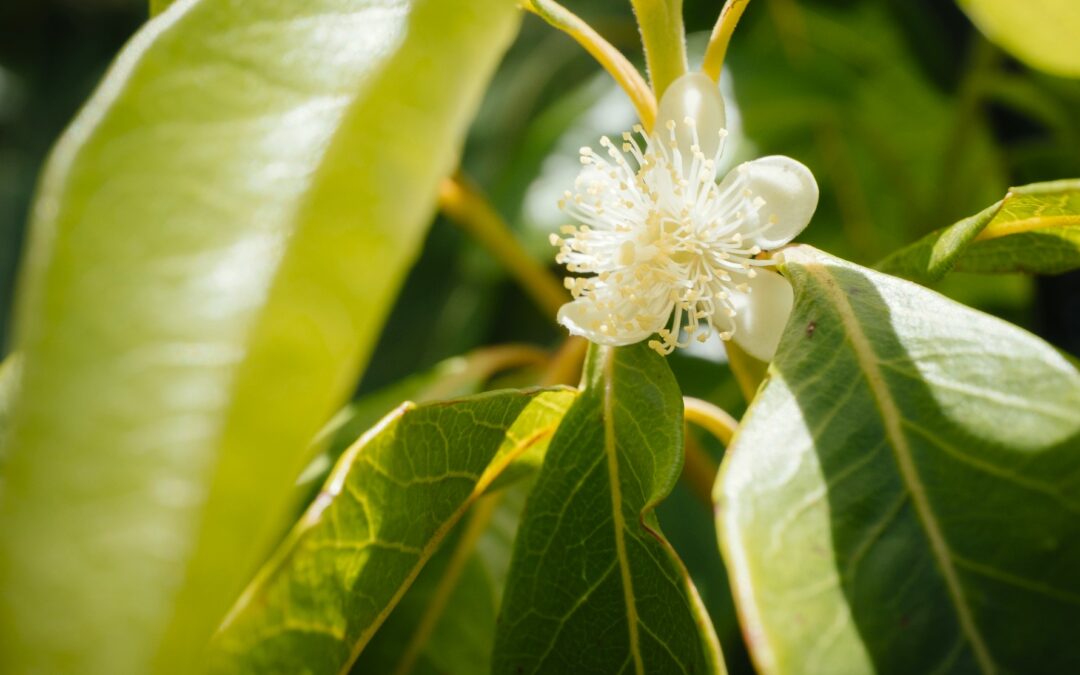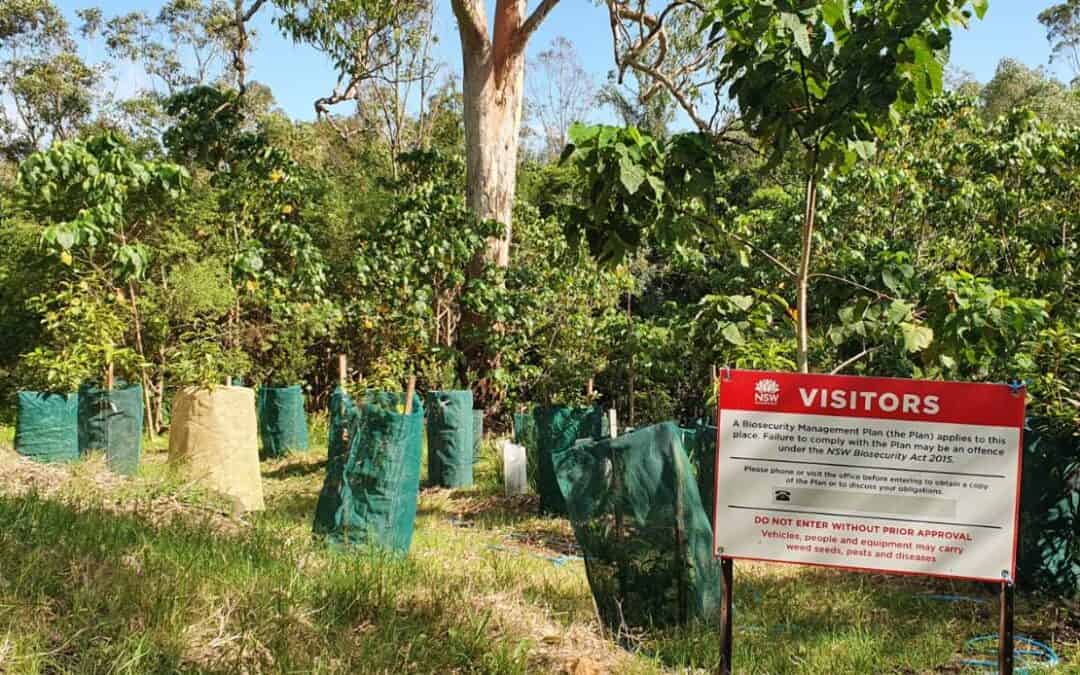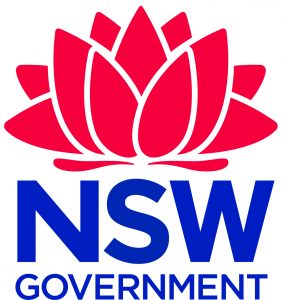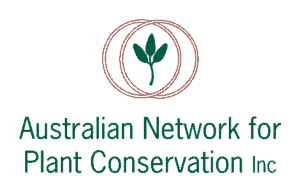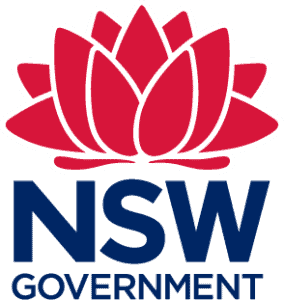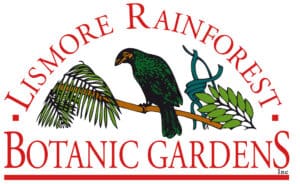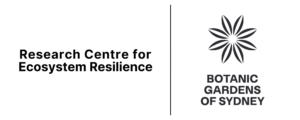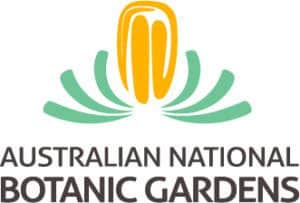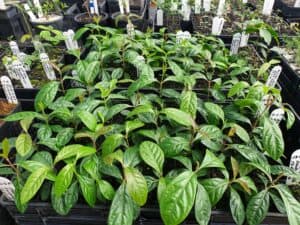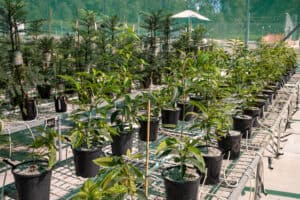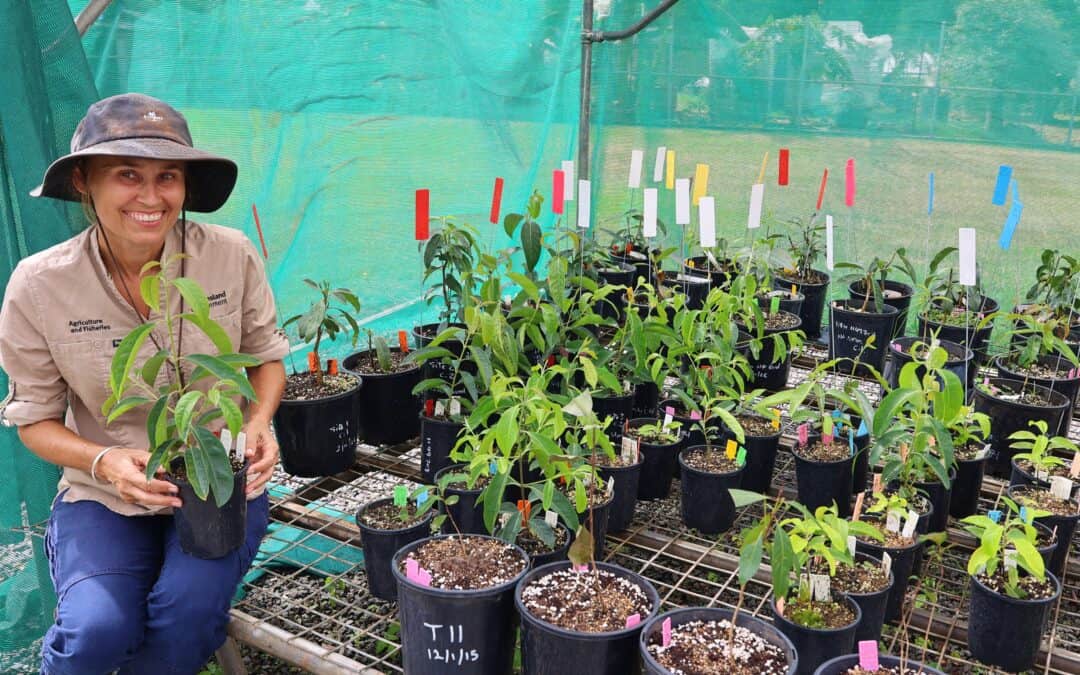
Oct 30, 2024 | Events Category
The Annual General Meeting of the Australian Network for Plant Conservation Inc. (ANPC) will be held on Wednesday 20 November 2024, from 1:00 pm to 2:00 pm (Australian Eastern Daylight-Saving Time) in the Dickson Room, Australian National Botanic Gardens, Clunies Ross St, Acton, 2601 and via Zoom.
The link to the paperwork including the draft Agenda and nomination form can be viewed and downloaded here AGM 2024 external. Please note, a second email will be circulated closer to the date when all the meeting papers and Final Agenda are available at the same link.
All financial members are encouraged to attend in a voting capacity to ensure we reach a quorum, and to hear about what the ANPC has achieved over the last year. This includes individual members and representatives of organisational members. To check your membership status, please contact the office.
Please RSVP to the Secretary by Wednesday 13 November 2024. This will greatly assist us in preparing a successful AGM. You will then receive the Zoom link in a calendar invite.
Election of Office-bearers and ordinary Committee members
Executive and Committee members hold their positions for two years from election, with limited repeat terms in a single position as specified in Rule 15 (3) – see the Constitution on the ANPC website.
Nominations are now open for the following positions on the ANPC Inc. Committee of Management:
- President
- Ordinary members (3 positions)
Nominees for the above positions must complete the Committee Nomination Form. Nominations must specify the position being sought. For clarification of the duties of the positions, or of the membership status of nominees or nominators, please contact the Secretary, Robert Hawes, well before the deadline.
Nominations must be received by the Secretary, Robert Hawes, at least seven days before the AGM, i.e. by close of business on Wednesday 13 November 2024. Nominations may be emailed to the Secretary or mailed to The Secretary, ANPC Inc., GPO Box 1777 Canberra ACT 2601. Nominees need to be nominated and seconded by two (2) members of the Network.

Oct 24, 2024 | Events Category
The next session will be held on Thursday 5 December 2024.
Time: 2:00 – 3:00 PM Australian Eastern Daylight Savings Time (AEDT).
Presenters: Emma Simpkins (Senior Regional Advisor Flora) and Rebekah Fuller (Senior Plant Pathogens Advisor) from Auckland Council.
Title: ‘Local government enabling community-led recovery of Myrtle Rust impacted species’.
Emma and Rebekah will discuss the actions implemented by local government to support threatened Myrtaceae in Auckland, primarily by engaging community to build capacity to support species and ecosystem recovery.
Their conservation actions include funding mana whenua (indigenous people) and community groups to lead monitoring of Lophomyrtus obcordata (rōhutu) and Syzygium maire (maire tawake) populations and carry out fungicide treatments in order to collect seed for propagation, establishing ex situ collections of threatened species including rōhutu and rātā moehau (Metrosideros bartlettii), creating awareness of Myrtle Rust through workshops and training, and advocating for nursery suppliers to have a nursery biosecurity accreditation (Plant Pass) to ensure healthy plants are used in restoration.
Auckland local government manage threatened species in the wild through regionally prioritised sites to ensure long term survival of species. Restoration of ecosystems is another important conservation activity and Myrtaceae are one of the key components of our planting palettes. The advice we provide for planting lists and biosecurity ensures our community are following best practice.
This quarterly series of free, informal virtual get togethers is a collaboration between the ANPC, University of NSW and the BGANZ Collections and Records Management group (BCARM).
REGISTER HERE!
Image: Pohutukawa (Metrosideros excelsa). Credit: Emma Simpkins

Sep 5, 2024 | News
Are you passionate about the conservation of our threatened native plants? Use your excellent interpersonal, communication and organisational skills to:
- work collaboratively with a diverse team of professionals to coordinate planning and delivery of a complex program.
- deliver a complex project/set of tasks in a timely manner, with minimal supervision, and work within strict deadlines.
- prepare communications materials for a broad range of audiences, including technical documents, reports to funding bodies, and communication documents for a general audience.
Location: to be negotiated (options include work from home office or possibly hosted by an appropriate organisation or agency, or a mix)
Salary etc: $75 per hour (includes leave loading) + 11.5% super. 27 hours/week for 18-month contract.
About the role: In this new position, you will coordinate recovery actions for four EPBC-listed Critically Endangered Myrtle Rust affected plant species: Rhodomyrtus psidioides (Native Guava); Gossia gonoclada (Angle-stemmed Myrtle); Rhodamnia rubescens (Scrub Turpentine) and Rhodamnia maideniana (Smooth Scrub Turpentine) through the formalisation of a current consortium, plus new partners, into a Recovery Coordination Team and:
- Facilitate agreement on, and coordinate delivery of, priority activities in the recovery program, through supporting effective operation of the Recovery Coordination Team.
- Identify resourcing needs and potential operational sources for these, and potential future partnerships, for ongoing progress (beyond life of this project) for recovery of the target species.
- Report on progress towards target species recovery and consolidation of working partnerships, concordant with relevant Australian Government reporting requirements for registered Recovery Teams.
- Provide secretariat support to the Recovery Coordination Team.
- Prepare and circulate communications updates for the Recovery Coordination Team, including recording and circulating meeting minutes, and recovery action program update for distribution to the broader stakeholder network. Assist the Chair in the preparation of other whole-of-program communications materials and documents as required.
- Maintain accurate records of team membership, actions and the progress status of actions.
- Facilitate internal and external consultation processes for the Recovery Coordination Team.
To be successful in this role, you will need a Bachelor’s degree or equivalent in natural sciences, advanced experience in threatened species management and recovery, demonstrated familiarity with fundamental documents on the Myrtle Rust problem and demonstrated understanding of issues and policies in plant conservation at species and ecological community level. A knowledge of plant conservation techniques and a willingness to travel and work flexibly to meet the needs of the program are also essential.
Background: Since its introduction to Australia in 2010, the exotic fungal disease Myrtle Rust has put 20-40 Myrtaceae species at risk of near-term extinction or serious decline. The Australian Network for Plant Conservation (ANPC) has played a key role in national Myrtle Rust matters since 2011, maintains a comprehensive information hub and was instrumental in developing the 2020 National Action Plan for Myrtle Rust (NAPMR) which is the action template for Myrtle Rust-affected species used by Commonwealth, States and researchers. The conservation path entails emergency germplasm capture, ex situ conservation, the selection of rust-tolerance traits, and eventual reinforcement or reintroduction of populations in the wild. Over the last 2 years, along with many partners including government departments and botanic gardens, the ANPC established a successful pilot dispersed-custody model for Native Guava with representative sampling and propagation of surviving wild germplasm, genetic management and communications/training activities, and commenced some actions for Scrub Turpentine.
Who we are: The Australian Network for Plant Conservation (ANPC) is a national not-for-profit organisation with a mission to ‘Promote and develop plant conservation in Australia ‘. We are a membership based organisation that’s been around since 1991. We work with a wide range of stakeholders including botanic gardens, local state and federal governments, research institutions, other NGOs, practitioners and community groups.
What we do: The ANPC brings people together (such as scientists, researchers, land managers, consultants, volunteers and students) from across Australia to collaborate, network and share information in an effort to conserve our native plant species and vegetation communities, prevent further extinctions and restore our natural areas and biodiversity. To achieve this we:
- hold training workshops, webinars and conferences.
- publish guidelines such as how to propagate and translocate threatened plants back into the wild.
- promote plant conservation and publish a quarterly journal Australasian Plant Conservation (APC).
- coordinate high priority projects with multiple stakeholders such as this project.
How to apply:
Your Expression of Interest should address the selection criteria in no more than 4 pages, and separately include your CV with the contact details for two referees.
Please send your Expression of Interest to the ANPC Business Manager by COB Friday, 20 September either via email: or by post to:
Australian Network for Plant Conservation
GPO Box 1777
Canberra ACT 2601.
For more information, please email one of the following ANPC management committee representatives:
- Caroline Gross
- Bob Makinson

Aug 30, 2024 | News
 The NSW Department of Climate Change, Energy, the Environment and Water funded an extension to the ‘Safe Custody for Native Guava‘ project for the 2023/24 financial year, with the following results:
The NSW Department of Climate Change, Energy, the Environment and Water funded an extension to the ‘Safe Custody for Native Guava‘ project for the 2023/24 financial year, with the following results:
- Continued monitoring of the already-dispersed Native Guava (Rhodomyrtus psidioides) collection, with all plants in excellent health and fruit production at 3 of 5 locations.
- A total of 91 plants from 34 unique genetic lineages of Native Guava have now been dispersed to partner gardens.
- A total of 16 plants from 8 genetic lineages of Scrub Turpentine (Rhodamia rubescens) were dispersed to 5 gardens including new partner Booderee Botanic Gardens.
- Continued integration of germplasm collection, dispersal and monitoring activities between QLD and NSW, including collection of genetic material from healthy R. psidioides appearing in response to drying climate.
- Continued and improved EpiCollect app training and monitoring of the ex situ collections at all partner locations enabling spatial aggregation of flowering, fruiting and health data.
- Collection of Native Guava and Scrub Turpentine fruit being sent to Botanic Gardens of Sydney for storage and viability testing.
- Genetic material collected from healthy Rhodamia maideniana and Rhodamia whiteana plants observed in the field and sent for additional genetic analysis.
- Ongoing monthly meetings of the Myrtle Rust Consortium where members networked and shared information, discussed issues and lessons, gave presentations and reported on germplasm collection, propagation, planting, research findings and maintenance of the ex situ collections. It also facilitated the submission of collaborative grant applications.
- Collaboration with UNSW and the BGANZ Collections and Records Management group (BCARM) on a quarterly series of informal virtual get togethers, the “Myrtle Rust Management for Practitioners – open series” which commenced in February 2024, focusing on practical aspects of managing and maintaining a conservation collection of Myrtle Rust susceptible species.
- Updating of the ANPC’s Myrtle Rust Hub.
- Updating of the Myrtle Rust ID and collection methods brochure.
- Development of an outreach partner garden flyer explaining the project, for the general public when visiting the ex situ collections and which can be used for guided walks.
- Flyer explaining ReCER resistance screening trial was developed and installed at ABG Mt Annan
- Preparation to publish a paper on the establishment of emergency conservation collections and subsequent dispersal of safe meta collections which is, to our knowledge, undocumented in publicly accessible literature.
The planting of the collections in-ground has been extremely successful with only 3 deaths reported from the 107 distributed plants, with these replaced. All deaths were accidental/human induced, one due to watering failure, one was broken during transit and a third damaged by grazing after fence damage.
EpiCollect monitoring over the course of the project determined that control of Myrtle Rust infection was very successful but frequent application of fungicide was required in the high infection zones. Monthly monitoring reported 77 instances of planted Native Guava plants flowering (the majority of which occurred in Summer 2023) and 128 instances of fruit production (the majority of which were in Summer and Autumn 2023). 22 of these fruits were mature. A total of 6 Scrub Turpentine fruit were recorded (2 in Summer and 4 in Autumn 2024) and 1 instance of flowering was recorded. The production and collection of mature fruit will be critical to the conservation of both these species.
ANPC Project Manager Chantelle Doyle coordinated this project.
Read this Botanic Gardens of Sydney blog piece written by Chantelle to find out more about how ‘genetics is helping to save plant species decimated by myrtle rust’ dated 28 July 2023.
Thank you to all our partner organisations for their generous support and commitment to this project:








Main image: Native Guava plants at Lismore Rainforest Botanic Gardens. Credit: Chantelle Doyle


Native Guava plants growing at the Australian Botanic Garden Mt Annan before dispersal. Credits: Veronica Viler (L) and Nathan Emery

Dec 22, 2023 | Events Category
There is a need for horticulturists and practitioners managing Myrtle Rust susceptible collections to collaborate, share ideas and workshop problems.
To address this the ANPC, UNSW and the BGANZ Collections and Records Management group (BCARM) are collaborating to co-ordinate a quarterly series of informal virtual get togethers, commencing in February 2024.
This series will be exclusively focused on practical aspects of managing and maintaining a conservation collection of Myrtle Rust susceptible species and will have an open forum structure. The series will be open to any practitioners across Australia and Aotearoa New Zealand managing collections impacted by Myrtle Rust including local council nurseries.
As part of customising the content and schedule we are seeking your feedback in this short survey.
The first session “Fundamentals of managing a Myrtle Rust sensitive collection” will be held on 22 February 2024 at 2pm Australian Eastern Daylight Time (AEDT).
REGISTER HERE!
For more information about Myrtle Rust visit the dedicated ANPC resource page.
We hope to see you there.
